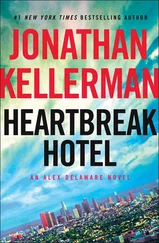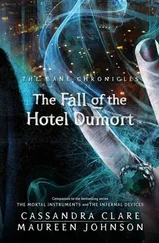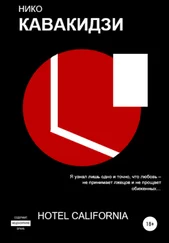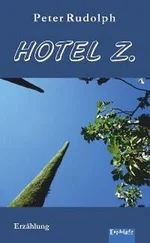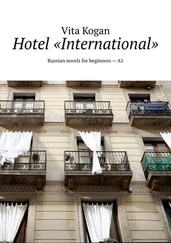It was as if the thunder of the ocean’s waves engulfed the house, crested in white sheets against the windows, pounded the roof.
Wait. Listen. Hear that?
Rain. Never stops.
No. Get up.
I can feel it. Do you feel that?
Here. Put this on. Quickly.
Like a small earthquake.
Hurry! Get out!
Take the Siata. I’ll follow in the truck.
Where are you going?
One last thing. I just remembered.
Forget it. We can come back later.
It’s too valuable.
It’s too dangerous.
You’re getting wet again. Get in the car.
Fuck it! Just hurry.
I’ll meet you at the bottom.
The hot pot sits between us, steam and fragrance curling up to the dark underbelly of your Fillmore roof. We fish with long chopsticks for the tender and shared sustenance. You pick out a bulb. I pick out a tuber. You pick out a root. I a leaf. You a seed. I a piece of bark. You algae. Me fungus. The fish head cools in a bowl for Konnyaku.
The Siata pulls away, its wipers flapping, wildly banging at the splatter. Headlights search the road, chasing the water to the bottom. She pulls herself around the hairpin curve, tires slipping, skimming a slick skin of water. She skids to a stop, backing away from a torrent of mud and uprooted trees. Within, she holds a small treasure and the unrequited future: a pink slip; two unfinished manuscripts, one of translated poems, songs of Gold Mountain, and another, an illustrated cookbook; a tin can of old photographs.
Light flashes a sudden blast, illuminating the falling house, but the thunder that follows is the thunder of its crashing: groan and slippage of parting concrete, shattering glass, crossbeams of weighted timber caving in on three tiered floors of gracious elegance, living room falling into library falling into studio, falling.
In the 1990s, Amy Ling, then professor of English and Asian American literature at the University of Wisconsin-Madison, sent me a questionnaire she hoped would turn into an essay that would be part of a collection of essays by Asian American writers. The answers I returned disappointed Amy—she sent me a more full-bodied response written by another author. Comparing my work to the other author’s, it seemed to me that we both had answered everything with the same ideas, except my answers were in shorthand. I decided to answer Amy with something she really didn’t want at all, something she could reject outright. So I wrote an article about a book I’d never written. That led to thinking about that unwritten work. It was about the Asian American movement, mostly as I knew it in Los Angeles. But by 1997, I had come to live in Santa Cruz, and I thought I should explore the San Francisco/East Bay area where my parents grew up and where I was born. I shifted to a new center for this now real project: the International Hotel in San Francisco Manilatown/Chinatown, the site of political activism and community service for almost a decade until 1977, when residents of the hotel were forcibly evicted.
The I-Hotel, as it was known to its residents and the greater city, housed mostly elderly Filipino and Chinese immigrant bachelors, men who had come to work and make their fortunes prior to World War II and who, because of antimiscegenation laws, exclusion acts prohibiting Asian immigration, and a life of constantly mobile migrant labor, were unable to find spouses, have children, and to settle in the United States. In the 1960s and 1970s, the I-Hotel was sold to force the eviction of the residents and to redevelop the site as the extension of a West Coast Wall Street. In an effort to save the hotel and the surrounding Chinatown and Filipino communities, Asian American activists staged dramatic protests with thousands of participants and made the hotel a center for political activities and community service. The I-Hotel became a magnet for a multitude of political action groups in the San Francisco Bay Area, a center and symbol for the Asian American movement.
Against the backdrop of the Vietnam War and the political and social changes of this period, Asian American students and community activists, influenced by the civil rights movement, the Black Panthers, and international revolutionary movements, gathered to create what became the Asian American, or Yellow Power movement. From this came Asian American studies, with departments in colleges and universities across the country, communes and cooperatives, drug rehabilitation programs, bookstores, newspapers and journals, theaters, filmmakers, cultural centers, artists, musicians, politicians, law cooperatives, educators, historians, underground Marxist-Leninist-Maoist collectives, and literary and political movements. For the Asian American community, this was a flourishing time of new creative energy and political empowerment.
Since beginning this project, I have spent countless hours in Asian American archives, wandered around the old brick-and-mortar sites, read books, viewed films, listened to music, speeches, and rallies, and had both long and short conversations with over 150 individuals from that time. Researching a period in this way is passionately involving, so much so that you begin to live it and to forget why you began the project in the first place. At some point, I realized that I was supposed to be writing a novel, and the research had to stop.
I began to create a structure for the project. I found my research was scattered, scattered across political affinities, ethnicities, artistic pursuits—difficult to coalesce into any one storyline or historic chronology. The people I spoke with had definitely been in the movement, but often times had no idea what others had been doing. Their ideas and lives often intersected, but their ideologies were cast in diverse directions. Their choices took different trajectories, but everyone was there, really there. Thus the structure I chose for the book is based on such multiple perspectives, divided into ten novellas or ten “hotels.” Multiple novellas allowed me to tell parallel stories, to experiment with various resonant narrative voices, and to honor the complex architecture of a time, a movement, a hotel, and its people. While the book has become inevitably big, it yet seems to me to be a small offering, a rendering to be continued and completed by others.
In the way of institutional support to accomplish research for this project, I would like to acknowledge: faculty research grants awarded by the Committee on Research and the Institute for Humanities Research at UC Santa Cruz; Amerasia Journal at UCLA and Russell Leong and Mary Kao; Asian American Studies Collection at UC Irvine and Dan Tsang; Asian American Studies Collection at UC Santa Barbara and Gary Colmenar; Asian American Studies Department at San Francisco State University and Malcolm Collier and Marlon Hom; Asian American Studies Library at UCLA and Marjorie Lee; The Car Show , KFPK Pacifica Radio, and John Retsek; Chonk Moonhunter Productions and Curtis Choy; City Lights Books and Paul Yamazaki; Eastwind Bookstore and Harvey Dong; Ethnic Studies Library at UC Berkeley and Wei Chi Poon; Filipino American National Historical Society and Fred and Dorothy Cordova; Fine Arts Gallery at San Francisco State University and Mark Johnson; Freedom Archives and Claude Marks; Hokubai Mainichi Archives and J.K. Yamamoto; Hon-Kun Yuen Archives and Eddie Yuen; Japanese American National Library and Karl Matsushita; Kearny Street Workshop and Nancy Hom; Manilatown Heritage Foundation and Emil de Guzman; McHenry Library at UC Santa Cruz and Frank Gravier, Martha Ramirez, and Beth Remak-Honnef; National Japanese American Historical Society and Francis Wong and Peter Yamamoto; Philip Vera Cruz Audio Archive and Sid Valledor; San Francisco State University Special Collections and Helene Whitson; Steve Louie Archives and Steve Louie; Urban Voice and Boku Kodama; Yuri Kochiyama Archives and Yuri Kochiyama. Also, I’d like to recognize the work of Sudarat Musikawong, who worked for the project as a research assistant through UCSC, creating a database and copying many hours of audiotapes from the H. K. Yuen audio archives. Also, a special nod and thanks to Warren Furutani and Jessica Hagedorn for shared material, to Sina Grace and Leland Wong for their graphic renderings, to Linda Koutsky for art design, to Anitra Budd, Allan Kornblum, and Kristin Thiel for editing, and to Claire Light, Molly Mikolowski, and Patricia Wakida for grant and publicity consulting support. Many thanks to the remarkable staff at Coffee House Press and the staff in Literature and Humanities at UC Santa Cruz for their careful and meticulous work, to Lourdes Echazabel-Martinez and Ronaldo Lopes de Oliveira for translations, to Jane Tomi Boltz and Fred Courtright for their legal expertise, to Craig Gilmore and the Facebook Fan Club for making me feel famous, and to Micah Perks for being my colleague in the crime of fiction. For Richard Sakai, there are no words to express my humble heart. And finally, a wave to Amy Ling, in the heavens, whose prodding gave rise to an article about an unwritten book; now that book is written.
Читать дальше

